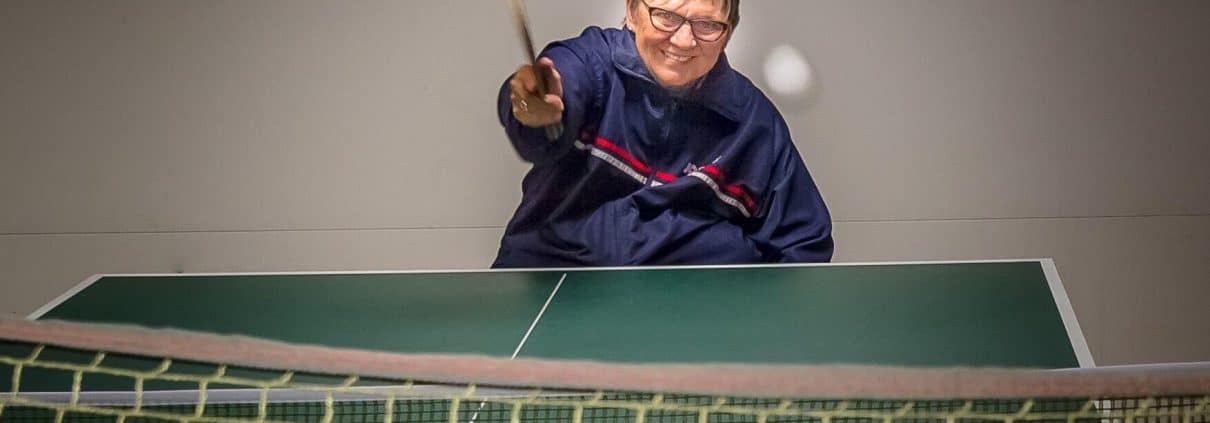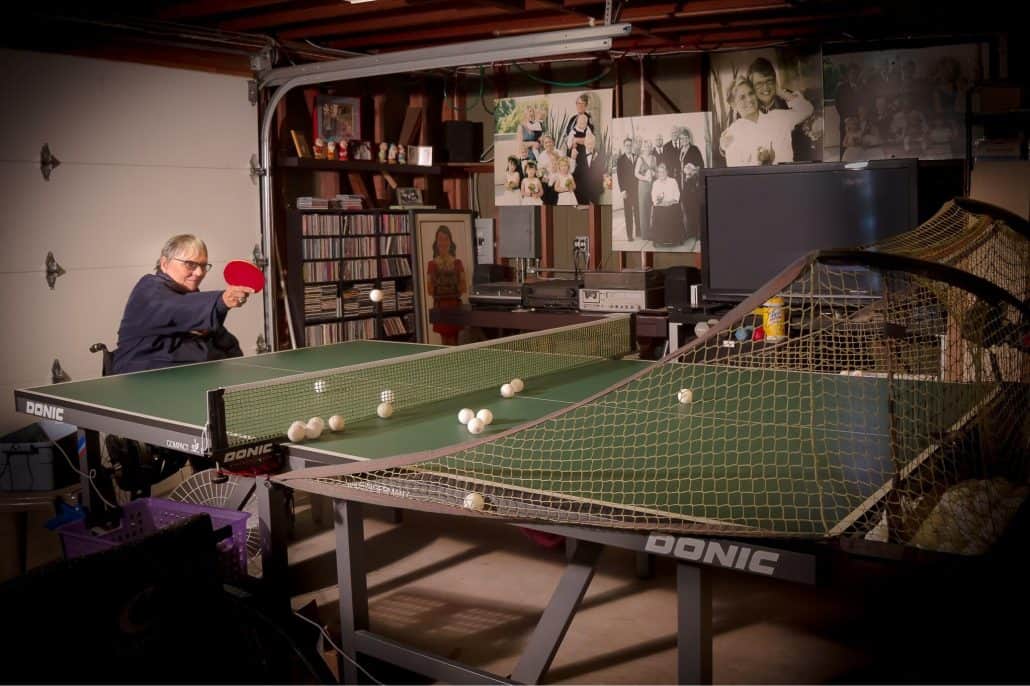(Table) Tennis Anyone?
(Table) Tennis Anyone?
Cindy Hall Ranii
All of us in SRNA Family know that Transverse Myelitis can hit us at about any age, and it can affect us in a variety of ways and degrees. TM blasted me twelve years ago at age 58, and within 72 hours of my first symptom of a backache I was a T-3 complete paraplegic. I have been a wheelchair user ever since, and I credit wheelchair tennis and table tennis as my companions in creating an active and healthy lifestyle.
I have always been an avid athlete, and as soon as I could propel myself in a wheelchair I started to explore ways to continue to pursue sports. Soon after leaving rehab I researched local disability sports programs in the City of San Jose here in California. I called the coach of the wheelchair tennis program who enthusiastically invited me to come and join in. No experience necessary! At first I needed assistance to wheel from my van to the court, to transfer from my chair to a borrowed tennis wheelchair and to learn the rudiments of playing in a chair compared to playing on my feet. I had played tennis since I was seven years old, so those skills quickly translated to the “two-bounce” sport of wheelchair tennis.
Wheeling on the smooth, flat surface of the court was exhilarating. Outside the court I had found it a struggle to propel myself in a world that is never ever flat, but on the court I again felt the joy of moving through space. I couldn’t run; that was gone to me. But I could really buzz around that court.
I competed in wheelchair tennis for five years and attained a national top-ten rating in the “A Division.” I realized, however, that I would never compete at a world-class level, and also my elbows and shoulders were starting to complain that this was not the best sport for a senior citizen. To complicate things, I broke my leg falling out of my chair on a van ramp, and the doctor recommended that I stay away from tennis for a few months.
The silver lining was that I started to play table tennis, which is just a fancy way of saying Ping Pong. From when I first rallied at the local Senior Center, to three years later when I was winning a bronze medal at the Para Pan Am games in Toronto in 2015, I have loved the sport. It is fast, gentle on the body, a sport for a lifetime, keeps me mentally sharp, is invigorating, can be played anytime, with anyone, it doesn’t cost a fortune to play, and it is ever challenging.
Now I play at least four times a week and have worked with the City of Santa Cruz to expand its program. Our senior group is comprised mostly of able bodied standing players, but it also includes a woman with Parkinson’s, a man with spinal stenosis, a 93 year old with vision challenges, one quadriplegic and myself. I am proud to say that I am the “champ” of the club. And that fact highlights one of the sweet things about Ping Pong in a chair: You can be competitive against standing, able-bodied opponents. My rating in able-bodied tournaments has risen from 400 to 1222, a reputable rating for anyone.
Wherever I play I take every appropriate opportunity to let people know about Transverse Myelitis. So far, I have never found anyone who had ever heard of it before. But now they know that it can have a pretty drastic effect on someone and that it can come out of the blue. They also know that it might knock you down, but it doesn’t have to knock you out.
If you are looking to be active, give table tennis a chance! Whether you are mobile, semi-mobile, a hemi, a para or a quad, Ping Pong is a sport that is guaranteed to be a life enhancer! It’s just fun!







